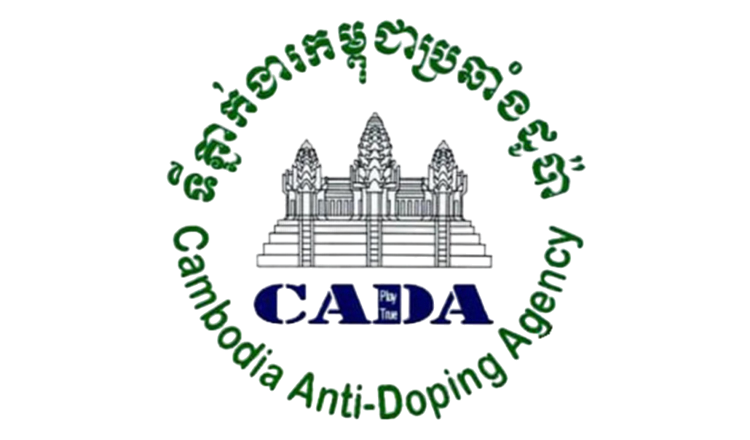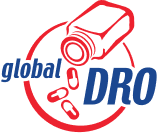Have any questions? Find your answers here !
Anti-Doping Basics
What is anti-doping and why is it important?
Anti-doping is the system of rules and practices that prohibit performance-enhancing drugs and methods in sport. Its goal is to protect athletes’ health and ensure fair competition – in other words, to level the playing field. By enforcing anti-doping rules (the World Anti-Doping Code and related Standards), sports authorities ensure that all competitors abide by the same rules and that cheating is minimized.
What is the World Anti-Doping Code and who enforces it?
The World Anti-Doping Code is the core international framework of rules for anti-doping, developed and maintained by the World Anti-Doping Agency (WADA). It harmonizes anti-doping policies across all countries and sports. National Anti-Doping Organizations (NADOs) like the Cambodia Anti-Doping Agency (CADA), international sports federations, Olympic committees and major event organizers are signatories required to implement the Code. WADA monitors compliance (e.g. by audits), and failure to follow the Code can even bar a country’s teams from international events.
Who enforces anti-doping in Cambodia?
The Cambodia Anti-Doping Agency (CADA) is the national body responsible for anti-doping in Cambodia. CADA carries out testing, manages test results, handles Therapeutic Use Exemptions (TUEs), provides education, and works with WADA and international federations to ensure Cambodian athletes follow international standards.
Why are anti-doping rules necessary?
Anti-doping rules protect clean athletes and preserve the integrity of sport. Doping can pose serious health risks, and it undermines fair play. By banning unfair performance aids, anti-doping programs help ensure that athletic success is achieved through training and talent, not prohibited drugs or methods.
Testing Procedures & Athlete Rights
Who can be tested and when?
Any athlete competing at the national or international level can be tested at any time – in or out of competition – by National Anti-Doping Organizations, international federations, or event organizers. Under WADA rules, athletes are “subject to doping control” whenever they compete, and testing can occur with no advance notice anywhere in the world. This includes both competition testing (e.g., at events) and out-of-competition testing (e.g., at training or at home).
What happens during a doping test?
When selected, a Doping Control Officer (DCO) or chaperone will notify the athlete and escort them to the testing station. The athlete is allowed to choose a sealed collection vessel for urine or select a blood kit for blood collection. A urine sample is provided under observation by the DCO; if blood is required, a trained phlebotomist draws two vials (A and B samples) from the athlete’s arm. The athlete then divides the urine sample into the A and B bottles, all under supervision. This ensures the sample is collected and split in a controlled, secure way.
What rights do athletes have during the test?
Athletes have certain rights to ensure the process is fair and transparent. For example, they have the right to privacy and to provide any medical information that may affect the sample (such as current medications). They also have the right to request analysis of the B sample if the A sample is positive, and to be present (along with a representative) at the B-sample opening and analysis. In short, athletes are informed of each step, can observe the sample splitting, and are kept apprised of test results and procedures according to WADA standards.
What happens if an athlete refuses or evades a test?
Under the anti-doping rules, refusal or evasion of sample collection is treated as a violation equivalent to a positive test. An athlete who fails to comply with testing (without compelling justification) will face sanctions.
Prohibited Substances & Methods
What is the WADA Prohibited List?
The Prohibited List is the official catalog of all substances and methods banned in sport, published by WADA every year. It specifies which drugs and procedures are prohibited at all times (in- and out-of-competition) and which are banned only in competition or in certain sports. For example, anabolic steroids are always banned, while some narcotic painkillers are banned only during competition. Athletes and support personnel must consult the current Prohibited List to know what is forbidden. Signatory organizations like USADA (and CADA) enforce these rules: in fact, “it’s important that athletes are aware of the substances and methods on the Prohibited List, as an athlete is responsible for any prohibited substance found in their body, regardless of intent.”
How can I check if a medication is banned?
Athletes should never assume a medicine is safe. Reliable tools exist: for example, the Global Drug Reference Online (Global DRO) lets you look up common medications and ingredients to see if they are on the banned list. Global DRO covers many over-the-counter and prescription drugs. In addition, coaches or team doctors can consult national resources (CADA may provide guidance) or the WADA Prohibited List itself. When in doubt, contact CADA before taking a new medication.
Are dietary supplements safe and allowed?
Many dietary supplements (vitamins, protein powders, herbal products) are not strictly regulated and can be risky. Some supplements have been found to contain undeclared banned substances. Athletes are advised to use extreme caution with supplements. Health professionals often “explain the risk of supplement use to athletes and how to reduce those risks,” recommending that athletes only use products certified by reputable testing programs. In short, supplements can inadvertently cause a positive test, so athletes should check every ingredient, use batch-tested products, or avoid them altogether.
What is the difference between in-competition and out-of-competition bans?
Some substances are prohibited only during competition periods, while others are banned at all times. For example, many painkillers like narcotics are only banned in-competition (so a Therapeutic Use Exemption might only be needed if used before or during an event). Athletes must refer to the Prohibited List categories: the list clearly marks which substances are “in-competition only.” Remember that any prohibited drug found in the body, at any time, can trigger testing, but the timing of “competition” can affect whether it’s a violation.
Results Management & Sanctions
What is an Adverse Analytical Finding (AAF)?
An AAF is the formal term for a positive test. It is the report a WADA-accredited laboratory sends when it detects a prohibited substance (or its marker) in an athlete’s sample. In everyday terms, an AAF is a lab result indicating doping. When an AAF occurs, it triggers the results management process: the athlete is notified, and anti-doping authorities begin an inquiry.
What happens after a positive test?
When an AAF is reported, the athlete is promptly notified and given the opportunity for a B-sample analysis. Typically, the athlete (and their representative) can be present when the B sample is opened and tested. If the B sample confirms the A sample, a hearing is scheduled. Throughout this process, CADA (with any involved sport federation) coordinates hearings or adjudication. In most cases, the athlete’s coach and federation, as well as WADA, are informed of each step.
What sanctions can result from a violation?
Penalties depend on the nature of the violation. They can include disqualification of results (loss of medals, points, rankings) and a period of ineligibility (suspension) from competition. The WADA Code sets standard sanction ranges. For example, a first-time offense for a significant violation often results in a 2- to 4-year ban. The key point is that sanctions “must be consistent with the World Anti-Doping Code”. Aggravating factors (like intentional doping or trafficking substances) can lead to longer bans (up to lifetime), while mitigating factors (like no significant fault) can reduce them.
Can I appeal a sanction?
Yes. Athletes have the right to a fair hearing and can appeal decisions as allowed by the WADA Code and national procedures. Typically, final appeals go to the Court of Arbitration for Sport (CAS) for international cases. It is important to note that even the adjudication process is governed by the Code: for example, under the USADA process (which CADA will mirror), the athlete covers their own defense costs and has full rights of appeal.
Responsibilities of Athletes and Support Personnel
What are an athlete’s responsibilities?
Athletes have a strict liability responsibility: they must ensure no prohibited substance enters their body. This means knowing the anti-doping rules, keeping track of all medications/supplements they take, and attending tests as required. WADA makes it clear that a positive test or other violation is enough to establish a rule violation, even without proof of intent, fault, or negligence. In other words, “an athlete is responsible for any prohibited substance found in [their] body, regardless of intent”. Athletes should use tools (like Global DRO) and TUEs to manage their use of necessary medications, and they must provide accurate whereabouts information if they are in a registered testing pool.
If a banned substance is found in my system without intent, can I be sanctioned?
Yes. Under the WADA Code, the mere presence of a prohibited substance is a violation. It is not required to prove the athlete intended to cheat or was negligent However, if an athlete can demonstrate no fault or negligence (for example, through documented supplement contamination), the sanction can sometimes be reduced. Still, the fact of the violation remains.
What are the responsibilities of coaches and support personnel?
Coaches, trainers, physicians, and other Athlete Support Personnel (ASP) are also bound by the Code. In fact, “Health professionals [and other ASP] are recognized as Athlete Support Personnel under the WADA Code,” and they must “be knowledgeable of and compliant with all anti-doping policies and rules”. Support personnel must not encourage or facilitate doping. They can even be sanctioned themselves for violations like trafficking or tampering. Practically, this means a coach or doctor should advise athletes about banned substances, help them use legitimate options, and discourage any prohibited practices. For example, team doctors should check any prescribed drug on Global DRO and assist with a TUE application if necessary. In short, everyone who works with the athlete should promote clean sport and follow the same anti-doping rules.
Education & Awareness
What educational resources are available?
Anti-doping organizations provide a range of educational programs. WADA itself encourages athletes to learn about anti-doping before they compete. For example, WADA’s ADEL online platform hosts free courses, webinars, checklists, and factsheets on topics like the Code, the Prohibited List, the testing process, TUEs, and health consequences of doping. National bodies and international federations also run education campaigns and workshops. For instance, USADA offers a “TrueSport” program and online modules covering drug testing rules, supplements, nutrition, and athlete responsibilities. Cambodian athletes and coaches should take advantage of CADA’s programs (e.g. seminars or e-learning) and any regional initiatives, which are required by the Code.
Is anti-doping education mandatory?
Yes. The World Anti-Doping Code mandates that signatories implement robust education programs. As WADA notes, “the Code makes it mandatory for all ADOs to deliver robust education programs” to athletes and support staff. This means CADA and sports federations in Cambodia must actively educate athletes (e.g. through workshops or online courses) about anti-doping rules, rights, and responsibilities. Athletes are also encouraged to proactively seek information from official sources like WADA, CADA, and their sports federation.
What should doctors and physiotherapists know about anti-doping?
Medical professionals working with athletes are considered Athlete Support Personnel under the WADA Code and must follow its rules. This means they can be held liable if they provide or prescribe banned substances without medical justification. Health professionals should familiarize themselves with the Prohibited List and use tools like Global DRO when prescribing medications to athletes. They should educate athletes about the risks of supplements and medications, and always look for permitted alternatives first. If a banned medication is truly needed (and no alternative exists), the medical professional should guide the athlete through applying for a TUE. In short, the medical care of athletes must take anti-doping regulations into account – both for the athlete’s health and to keep their sport careers clean.





